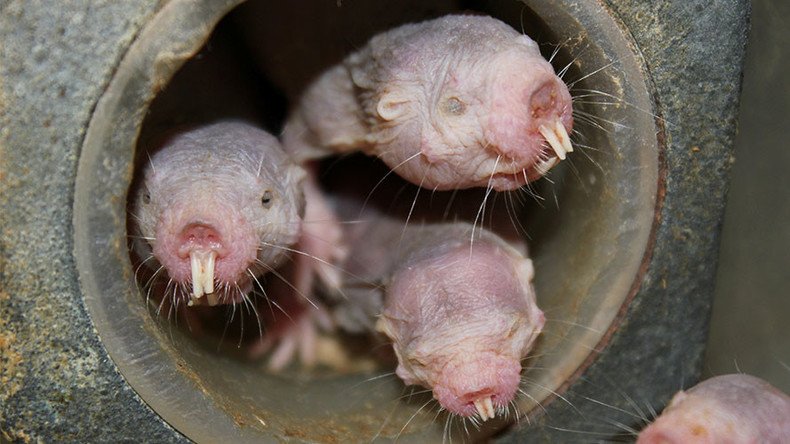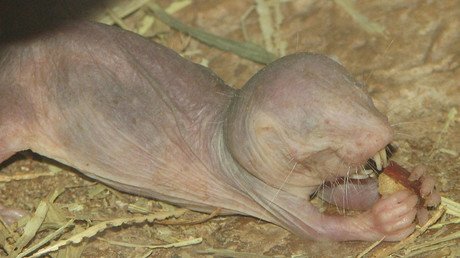Naked mole-rats can go without oxygen for 18 mins by ‘turning themselves into plants’ – study

There's no denying that naked mole-rats got the short end of the stick in the looks department. But what they lack in attractiveness they make up for in sheer awesomeness, managing to safely live without oxygen for 18 minutes, according to a new study.
Once you look past their buck teeth, loose skin and generally ugly aesthetic, the naked mole-rat is a pretty neat little rodent.
While it’s long been known that they rarely develop cancer, are immune to types of chronic pain, and live far longer than similar rodents of their size, the naked mole-rat can now add even more fascinating skills to its résumé, according to a new study published in the journal Science.
The research found that the rodents can go without oxygen for a full 18 minutes, and can survive five hours at oxygen levels which would kill a human in minutes.
Their skills were discovered when scientists put the rodents in sealed tubes known as atmospheric chambers.
The scientists then began reducing the oxygen levels. Even as the oxygen dropped below 5 percent of the gases in the tube, the naked mole-rats were fine for five hours – unlike their mouse counterparts, who suffocated and died after just 15 minutes.
“We were ready to come to the rescue and nothing happened. They were still walking around, having a good old time," lead researcher Thomas Park, from the University of Illinois at Chicago, told Gizmodo.
When the oxygen was completely removed and replaced with nitrogen, the naked mole-rats passed out. But even after 18 minutes, they recovered when they were given more oxygen. The mice, on the other hand, died after just 45 seconds of no oxygen.
The process by which they manage to survive on zero oxygen, however, is perhaps even more interesting than the fact itself.
Blood tests showed that the funny-looking little creatures are able to alter their metabolism so that cells are powered by fructose rather than glucose – a process which requires no oxygen and was previously believed to only be used by plants.
"There was nothing different in the use of the usual energy source – glucose – between naked mole-rats and mice when there was no oxygen around," lead author Jane Reznick, from the Max Delbrück Center for Molecular Medicine in the Helmholtz Association (MDC), said in a statement.
"But we were quite surprised to find high levels of two unusual sugars – fructose and especially sucrose – in the blood of oxygen-deprived naked mole-rats. These sugars are mainly known for causing metabolic syndrome and sucrose is only made by plants."
The unique biology allows the naked mole-rats to slip into a sort of vegetative state, during which the heart rate drops from 200 beats per minute to around 50. Amazingly, the process completely protects all of the rodent's organs, including the heart and the brain.
"The naked mole-rat has simply rearranged some basic building-blocks of metabolism to make it super-tolerant to low oxygen conditions," Park said in a statement.
There's no hangover associated with the process, either. In fact, once the naked mole-rats get even the slightest bit of oxygen, they start moving again as if nothing happened.
"This is just the latest remarkable discovery about the naked mole-rat – a cold-blooded mammal that lives decades longer than other rodents, rarely gets cancer, and doesn't feel many types of pain," Park said.
The study could prove beneficial for humans, with researcher Gary Lewin from the MDC saying the process could theoretically be mimicked in certain patients.
"Patients who suffer an infarction or stroke experience irreparable damage after just a few minutes of oxygen deprivation," Lewin said.
"Theoretically, very few changes might be needed to adopt this unusual metabolism," he added.














